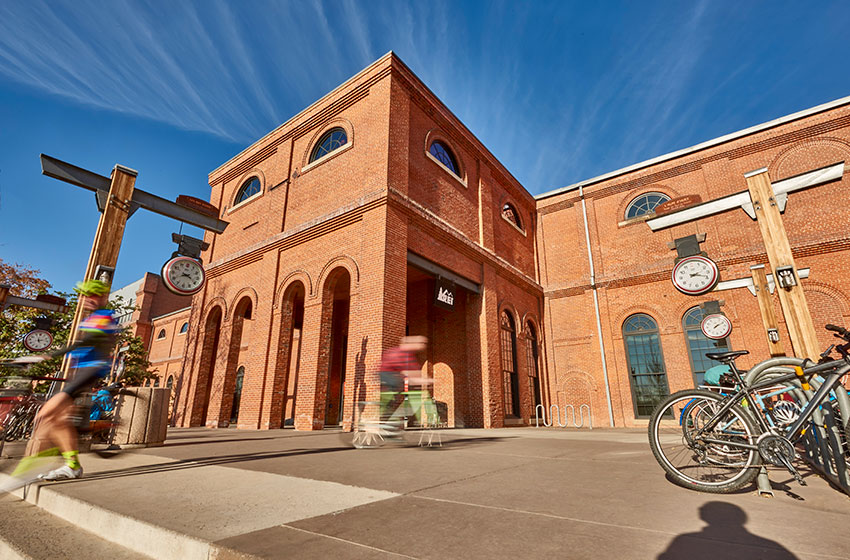Redevelopment of the historic Denver Tramway Powerhouse into an approximately 90,000-square-foot Recreational Equipment Inc. flagship retail store.
Incorporated in 1886, the Denver Tramway Company (DTC) obtained an exclusive city franchise to build electric streetcar lines in Denver. The Denver Tramway Powerhouse was built in 1901 to house the boilers and engines used to generate electricity for the DTC rail system that spread throughout the Denver metropolitan area. The powerhouse location was chosen for its proximity to the South Platte River (which provided cooling for the turbines), easy access to coal from the adjacent rail lines, and its central location to the DTC’s main terminal and downtown Denver.
As the automobile gained popularity, electric rail lines were removed and the Denver Tramway Powerhouse closed in 1950. Past tenants included a warehouse for The International Harvester Company and the Forney Museum of Transportation. In 1998, the building was sold to Recreational Equipment, Inc. (REI) in 1998 for redevelopment into its Denver flagship store.
Envisioned as a catalyst for development in the Central Platte Valley, REI chose the site for its visibility from the highway and downtown, regional access, historic character of the building and proximity to the river and bike paths. The high cost of historic preservation, life-safety upgrades and environmental abatement rendered the plan financially infeasible. DURA provided approximately $6.3 million in sales tax TIF reimbursement to REI to make the project possible.
Renovations began in 1998 and were completed in April 2000. In 2001, the renovated building was listed on the National Register of Historic Places. The approximately 90,000-square-foot REI flagship store includes a 45-foot indoor climbing wall, outdoor climbing features, mountain bike trails and scenic walking/jogging trails that wind through native plants and water features.
The building is adjacent to Confluence Park, where Cherry Creek meets the South Platte River. Denver’s premier kayak water park and Confluence Park attracts visitors for concerts and gatherings along the river’s edge. The REI flagship store is a prime example of public and private sectors coming together to adapt and reuse a significant part of Denver’s history. The development also helped fulfill the city’s vision for the Central Platte Valley as the entertainment spine of an expanding downtown.
